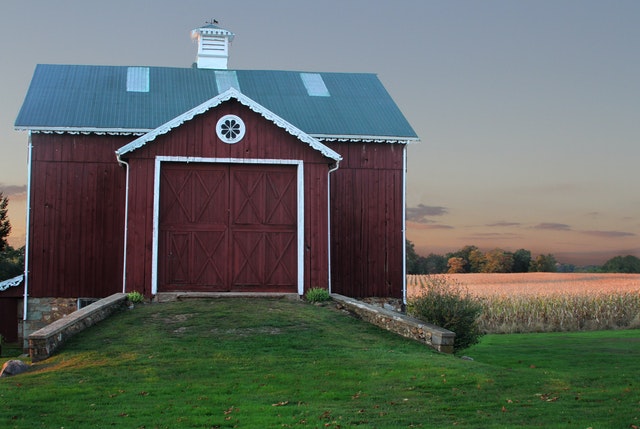A barndominium is a unique and versatile type of residential structure that combines the features of a barn and a condominium. These structures typically have a metal or steel frame, often resembling a large agricultural barn on the exterior. However, the interior of a barndominium is converted into a comfortable living space, making it an attractive option for those seeking a more rustic or industrial aesthetic.
A traditional home refers to the conventional residential structures that have been prevalent for centuries. These homes come in various home styles, such as colonial, Victorian, modern, and more, depending on the era and region. Traditional homes are often made of wood or brick and are known for their classic and timeless design.
Pros and Cons of Barndominiums and Traditional Homes
Pros of Leaving in Barndominium
Living in a barndominium can offer several advantages, making it an appealing housing choice for various individuals. Here are some of the pros of living in a barndominium:
- Cost-Efficiency: Barndominiums are often more cost-effective to build than traditional homes. They typically have a simpler construction process and use durable materials like metal frames and roofing, which can lower building costs.
- Versatile Design: Barndominiums provide an excellent canvas for customization. Owners can tailor the interior layout, finishes, and aesthetics to suit their preferences. This flexibility allows for creative and unique living spaces.
- Spacious Interiors: Barndominiums are known for their open and airy interiors. High ceilings and large, unobstructed spaces create a sense of spaciousness, making them ideal for various uses, including open-concept living, entertainment areas, and home offices.
Cons of Leaving in Barndominium
While living in a barndominium can have several advantages, there are also some cons or drawbacks that individuals should consider when choosing this housing option. Here are some of the cons of living in a barndominium:
- Limited Curb Appeal: Barndominiums often have a utilitarian or industrial exterior appearance due to their metal or steel construction. This can result in limited curb appeal and may not blend well with traditional neighborhood aesthetics.
- Building Codes and Regulations: Depending on the location and local regulations, barndominiums can face challenges when it comes to building codes and zoning requirements. Meeting these standards can be more complex compared to traditional homes, and obtaining necessary permits may be more challenging.
- Noise: The metal construction of barndominiums can amplify external noise, such as rain, wind, or hail, leading to a potentially noisy living environment during adverse weather conditions.
Pros of Living in a Traditional Home
Living in a traditional home offers several advantages that appeal to a wide range of homeowners. Here are some of the pros of living in a traditional home:
- Classic Design: Traditional homes are known for their timeless home styles, which often include features like pitched roofs, dormer windows, front porches, and elegant facades. This classic design exudes a sense of charm and history that many homeowners find appealing.
- Established Neighborhoods: Traditional homes are typically found in well-established neighborhoods with mature trees, well-maintained streets, and a sense of community. These neighborhoods often provide a stable and pleasant living environment.
- Strong Resale Value: Traditional homes tend to hold their value well over time. Their design appeal and location in desirable neighborhoods make them attractive to buyers, which can result in good resale value when it’s time to sell.
Cons of Living in a Traditional Home
While traditional homes offer many advantages, there are also some potential drawbacks to consider when living in such a property. Here are some of the cons of living in a traditional home:
- Higher Initial Costs: Traditional homes tend to have higher upfront costs compared to more modern housing options. This includes both the purchase price and potential renovation or maintenance expenses.
- Limited Customization: Traditional homes often come with home design features that are characteristic of their era and style. This can limit the degree of customization available to homeowners who wish to modernize or personalize their living spaces.
- Maintenance Requirements: Older traditional homes may require more maintenance than newer construction. This can include repairs to aging plumbing, electrical systems, roofing, and structural components.
Design and Customization of Barndominiums vs. Traditional Homes
When comparing the design and customization options for barndominiums and traditional homes, it’s evident that both housing types offer unique opportunities for personalization. Let’s delve into the specific customization options for each, highlighting their distinct features.
Customization Options for Barndominiums
1. Interior Layout:
- Open Concept vs. Defined Rooms: Barndominiums offer an open canvas for interior layouts. You can choose to have a spacious open concept with fewer walls or create defined rooms for specific functions.
- Number and Size of Bedrooms: Customize the number and size of bedrooms to accommodate your family’s needs or desired guest spaces.
- Bathroom Layout: The placement and number of bathrooms, as well as the choice of fixtures and finishes, can be tailored to your preferences.
- Kitchen Configuration: Design the kitchen layout, including the placement of appliances, cabinets, and countertops.
- Living Spaces: Create functional living spaces, such as a living room, dining area, and entertainment or media room, based on your lifestyle.
2. Exterior Finishes:
- Siding and Cladding: Barndominiums allow for diverse exterior cladding materials, such as metal panels, wood siding, or a combination of materials, giving you the freedom to choose a unique aesthetic.
- Roofing: Select the roofing material, style, and color that align with your design vision. Options range from traditional metal roofing to asphalt shingles.
- Windows and Doors: Customize the style, size, and placement of windows and doors to optimize natural light, ventilation, and the overall look of the exterior.
- Exterior Colors: Choose a color scheme that complements your design preferences and harmonizes with the surrounding environment.
3. Functional Spaces:
- Garage or Workshop: If you have specific hobbies or storage needs, allocate space for a garage, workshop, or storage area within the barndominium.
- Home Office: Create a dedicated home office or workspace with the necessary features and technology to support your work or study needs.
- Recreational Areas: Design spaces for recreation, such as a gym, game room, or home theater, tailored to your leisure activities.
- Outdoor Living: Plan for outdoor spaces like patios, decks, or porches for relaxation and entertaining, extending your living area into nature.
Customization Options for Traditional Homes
1. Interior Design:
- Flooring: Choose from a wide array of flooring materials, including hardwood, tile, carpet, or laminate, to match your aesthetic preferences and lifestyle.
- Wall Finishes: Select paint colors, wallpaper, or decorative wall treatments to create the desired ambiance and personality for each room.
- Cabinetry and Built-Ins: Customize kitchen and bathroom cabinetry, and consider built-in shelving or storage solutions throughout the home to enhance functionality.
- Lighting Fixtures: Install fixtures that reflect your style, whether it’s traditional chandeliers, modern pendant lights, or eclectic choices.
- Molding and Trim: Add design details like crown molding, baseboards, and wainscoting to achieve a classic and elegant look.
2. Landscaping and Exterior:
- Front Yard and Backyard: Design and landscape outdoor spaces, including gardens, lawns, patios, and pathways, to enhance curb appeal and outdoor living.
- Exterior Accents: Enhance curb appeal with home design features like gables, dormers, or a covered front porch, adding character to the traditional home’s façade.
- Driveway and Entryway: Customize the driveway material and style, as well as the entryway design and door to create a welcoming first impression.
- Fencing and Privacy: Choose fencing options for both aesthetics and privacy considerations, aligning with the home’s overall design.
3. Renovation Potential:
- Renovation and Expansion: Traditional homes often have renovation potential, allowing homeowners to update and expand their living spaces as their needs change and budgets allow.
- Basement and Attic Conversion: Transform the basement or attic into usable living spaces, such as a home office, guest suite, or recreational area, to maximize space.
- Kitchen and Bathroom Remodeling: Modernize kitchens and bathrooms to meet contemporary design and functionality standards, giving these high-traffic areas a fresh and stylish look.
- Energy Efficiency Upgrades: Retrofit the home with energy-efficient features like insulation, energy-efficient windows, and upgraded HVAC systems to reduce utility costs and environmental impact.
In summary, both barndominiums and traditional homes offer extensive customization opportunities. Barndominiums excel in providing open and versatile spaces, while traditional homes showcase timeless home design features and landscaping potential. The choice between the two depends on individual preferences, lifestyle, and the desired balance between rustic charm and classic elegance.

